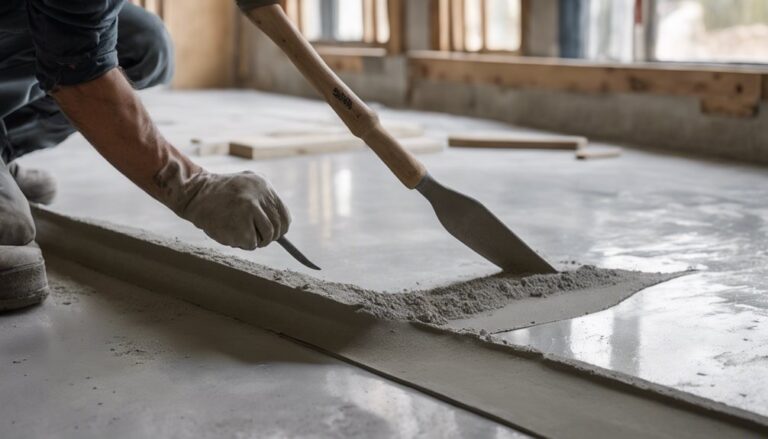To loosen your pelvic floor muscles, start with breathing techniques like diaphragmatic breathing to promote relaxation. Gentle stretching exercises, such as Child's Pose or Hip Flexor Stretch, can also help relieve tension. Consider mindful meditation to increase body awareness and foster relaxation. Self-massage using your fingers or a massage ball provides targeted relief, while warm baths soothe and enhance circulation. Monitoring your muscle tension regularly is essential. If you're experiencing persistent discomfort, consulting a healthcare professional can be beneficial. By exploring these methods, you can improve your pelvic health and well-being, with even more insights available ahead.
Understanding Pelvic Floor Tension
Understanding pelvic floor tension is essential for maintaining overall pelvic health, especially since many individuals may not realize how tightness in this area can impact their daily life. The pelvic anatomy consists of muscles, ligaments, and connective tissues that support your organs and contribute to core stability. Muscle tension in this region can lead to discomfort, urinary issues, or even pain during intimate activities. Recognizing the signs of pelvic floor tension is vital; you might experience a sense of heaviness or tightness. By acknowledging this tension, you can take proactive steps toward addressing it. Embracing relaxation techniques can help restore balance, allowing you to experience greater freedom and comfort in your daily activities, ultimately enhancing your overall well-being.
Benefits of Relaxing Pelvic Muscles
Relaxing your pelvic muscles offers several significant benefits that can enhance your quality of life. You'll likely experience improved bladder control, enhanced sexual function, and reduced pelvic pain. Understanding these advantages can motivate you to prioritize pelvic muscle relaxation techniques.
Improved Bladder Control
When pelvic floor muscles are relaxed, you may experience significant improvements in bladder control. This relaxation allows your bladder to function more efficiently, reducing urgency and frequency issues. Engaging in bladder training alongside pelvic exercises can enhance these benefits, promoting a sense of freedom in your daily activities.
| Benefits | Description |
|---|---|
| Reduced Urgency | Less frequent urges to urinate |
| Improved Control | Better ability to hold urine |
| Enhanced Comfort | Decreased discomfort during bladder filling |
| Increased Confidence | Greater ease in social situations |
Enhanced Sexual Function
Loosening pelvic floor muscles can greatly enhance sexual function, as tension in these muscles often leads to discomfort and reduced sensitivity during intimacy. Relaxing these muscles supports sexual wellness and intimacy enhancement, allowing you to experience deeper connections with your partner. Here are three key benefits:
- Increased Sensitivity: Relaxed muscles can amplify pleasurable sensations, making intimacy more enjoyable.
- Improved Blood Flow: Enhanced circulation in the pelvic area can lead to stronger arousal and more intense orgasms.
- Greater Emotional Connection: Reduced tension fosters a sense of vulnerability and trust, enhancing emotional intimacy.
Reduced Pelvic Pain
Tension in the pelvic floor can lead to significant discomfort and pain, impacting your overall quality of life. By learning to relax your pelvic muscles, you can experience substantial pain relief. This relaxation not only reduces pelvic pain but also contributes to a sense of freedom and comfort in daily activities.
| Benefits of Relaxation | Impact on Pelvic Pain |
|---|---|
| Improved muscle flexibility | Decreased discomfort |
| Enhanced blood circulation | Alleviated tension |
| Better emotional well-being | Increased mobility |
Embracing techniques like deep breathing, gentle stretches, and pelvic floor exercises can help you achieve these benefits. Ultimately, prioritizing pelvic muscle relaxation can lead to a healthier, more fulfilling life.
Breathing Techniques for Relaxation
Breathing techniques play an essential role in relaxing your pelvic floor muscles. Diaphragmatic breathing can enhance oxygen flow and promote a sense of calm, while progressive muscle relaxation helps release tension throughout your body. Incorporating these methods into your routine can greatly improve your overall pelvic health and well-being.
Diaphragmatic Breathing Benefits
How can the way you breathe impact your overall relaxation and pelvic floor health? Diaphragmatic breathing is a powerful tool that enhances breath awareness and promotes relaxation. Here are three key benefits:
- Reduces Stress: Engaging your diaphragm encourages a calming response, helping to lower cortisol levels.
- Improves Pelvic Floor Function: Proper use of your breath can aid in gently loosening tight pelvic floor muscles, fostering a sense of freedom.
- Enhances Diaphragmatic Yoga Practice: Integrating this breathing technique into your yoga routine can deepen relaxation and increase overall body awareness.
Progressive Muscle Relaxation Techniques
While you may already be familiar with various relaxation techniques, progressive muscle relaxation (PMR) offers a structured approach to alleviating stress and tension throughout your body. This technique involves systematically tensing and relaxing different muscle groups, enhancing your muscle awareness and promoting tension release. Start by finding a quiet space to sit or lie down comfortably. Begin with your feet, tensing the muscles for a few seconds, then releasing. Gradually work your way up to your head, focusing on each muscle group. As you practice PMR, you'll notice how your body responds, allowing you to cultivate a deeper sense of relaxation. By integrating PMR into your routine, you can effectively loosen your pelvic floor muscles and achieve a greater sense of freedom.
Gentle Stretching Exercises
Gentle stretching exercises can be an effective way to loosen pelvic floor muscles, especially if you're experiencing tightness or discomfort. Incorporating gentle yoga and relaxation techniques can enhance your sense of freedom and well-being. Here are three exercises to contemplate:
- Child's Pose: Kneel and sit back on your heels, stretching your arms forward. This position promotes relaxation and releases tension.
- Seated Forward Bend: Sit with legs extended, reach for your toes, and breathe deeply. This stretches the lower back and pelvic area.
- Hip Flexor Stretch: Lunge forward with one foot, keeping the other knee on the ground. This opens up the hips and relieves tightness.
Self-Massage Techniques
Self-massage techniques can be an excellent way to release tension in the pelvic floor muscles. You can use various self-massage tools to target specific pressure points effectively. Here's a simple guide to help you get started:
| Technique | Description |
|---|---|
| Direct Pressure | Use your fingers to apply direct pressure on tight areas. |
| Massage Balls | Roll a massage ball under your pelvis to relieve tension. |
| Foam Roller | Gently roll over a foam roller to release muscle knots. |
| Vibrating Tools | Utilize vibrating self-massage tools to stimulate blood flow. |
Incorporating Mindfulness Practices
Incorporating mindfulness practices into your routine can greatly enhance your ability to loosen pelvic floor muscles. By fostering a deeper connection with your body, you can achieve greater relaxation and release tension. Here are three effective strategies to contemplate:
- Mindful Meditation: Spend a few minutes each day focusing on your breath and cultivating awareness of your pelvic region.
- Body Awareness Exercises: Engage in activities that promote awareness of your body, like yoga or tai chi, to help you connect with your pelvic floor.
- Guided Relaxation: Use audio resources or apps to lead you through relaxation techniques that can help you release tension consciously.
When to Seek Professional Help
While many individuals can benefit from self-guided methods to loosen pelvic floor muscles, there are times when seeking professional help becomes vital. If you're experiencing persistent discomfort, pain, or any signs of urgency such as frequent urges to urinate or difficulty controlling bowel movements, it's important to consult a healthcare provider. A professional assessment can help identify underlying issues that self-treatment may not address. They can offer tailored therapies and guidance, ensuring you regain comfort and function. Remember, seeking help isn't a sign of weakness; it's a step toward freedom and improved well-being. Prioritizing your health by consulting a specialist can empower you to manage and alleviate your symptoms effectively.
Frequently Asked Questions
Can Pelvic Floor Tension Affect Sexual Performance or Pleasure?
Yes, pelvic floor tension can greatly affect your sexual performance and pleasure. When these muscles are tight, it may lead to discomfort, reduced sensitivity, or even pain during intimacy, impacting your overall sexual health. Prioritizing muscle relaxation can enhance your experience, allowing for greater enjoyment and connection with your partner. Embracing techniques to release tension can empower you to reclaim a fulfilling sexual life, promoting both physical and emotional well-being.
Are There Specific Foods That Help Relax Pelvic Floor Muscles?
When it comes to relaxing pelvic floor muscles, certain foods can help. Incorporating magnesium-rich foods, like leafy greens, nuts, and seeds, may promote muscle relaxation. Herbal teas, such as chamomile or peppermint, can also provide soothing effects on the body. Staying hydrated is essential too, as it supports overall muscle function. By focusing on these dietary choices, you can create an environment that encourages relaxation and enhances your well-being.
How Long Does It Typically Take to See Improvements?
When you're looking at the improvement timeline for muscle relaxation, it can vary considerably from person to person. Generally, you might start noticing changes within a few weeks of consistent practice. However, for some, it could take a couple of months to achieve noticeable results. Patience is key, and incorporating relaxation techniques regularly can enhance your progress. Remember, your body responds uniquely, so listen to it and adjust as needed for best outcomes.
Is Pelvic Floor Tension More Common in Certain Age Groups?
Imagine your pelvic floor as a tightly wound spring. As you age, various age-related factors can increase tension in this area, often impacting pelvic health. It's common for younger individuals to experience less tension, while women during and after childbirth or those entering menopause may face heightened issues. Understanding this can empower you to address concerns, fostering a sense of freedom and comfort in your body as you navigate these natural life stages.
Can Stress Impact Pelvic Floor Muscle Tightness?
Yes, stress can greatly impact pelvic floor muscle tightness. When you're stressed, your body naturally tenses up, leading to muscle contractions that can create discomfort. Effective stress management techniques, like mindfulness and deep breathing, can promote muscle relaxation. By addressing your stress levels, you're taking an important step towards alleviating tension in the pelvic floor, ultimately fostering a sense of freedom and well-being in your body. Remember, it's vital to prioritize your mental health.




